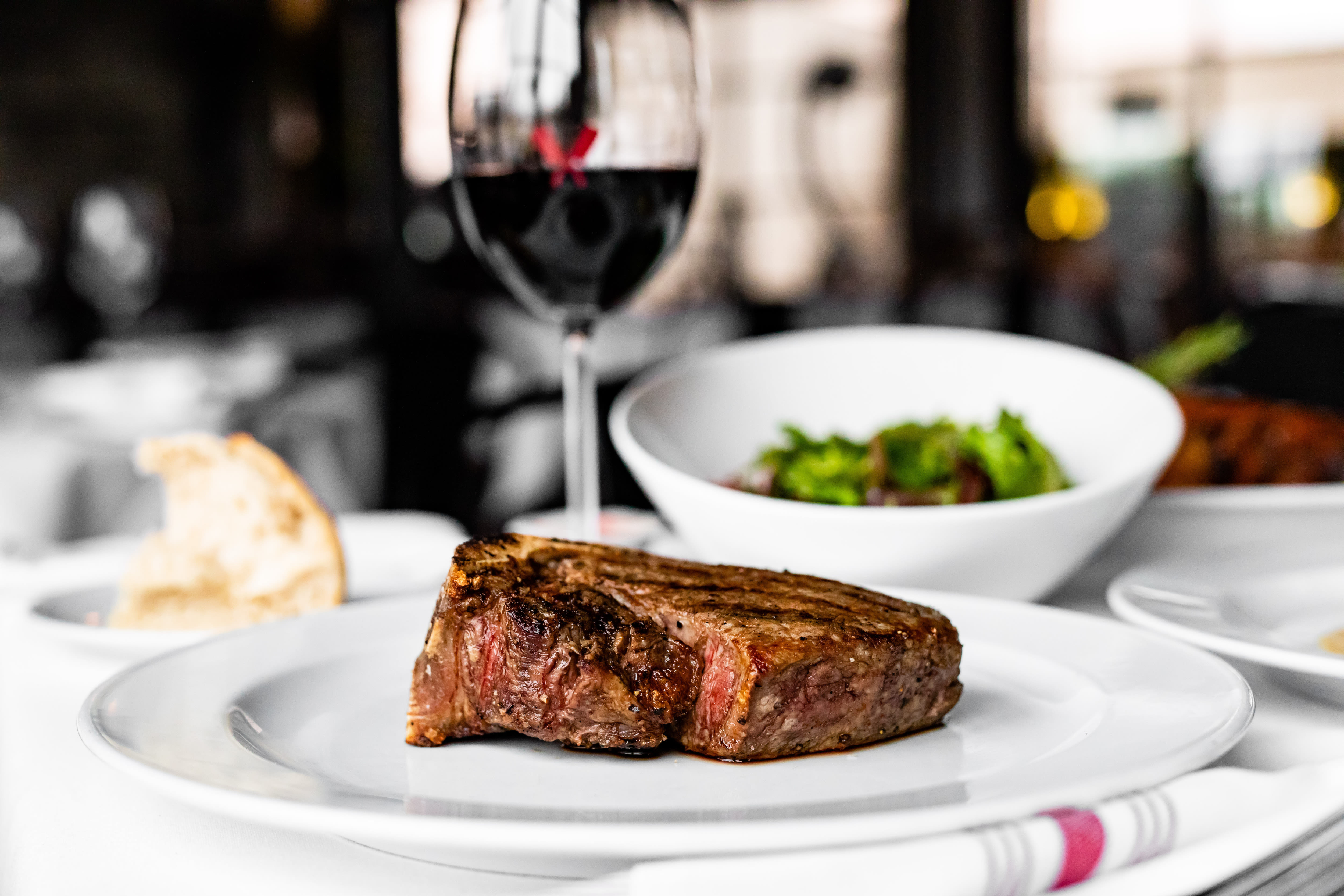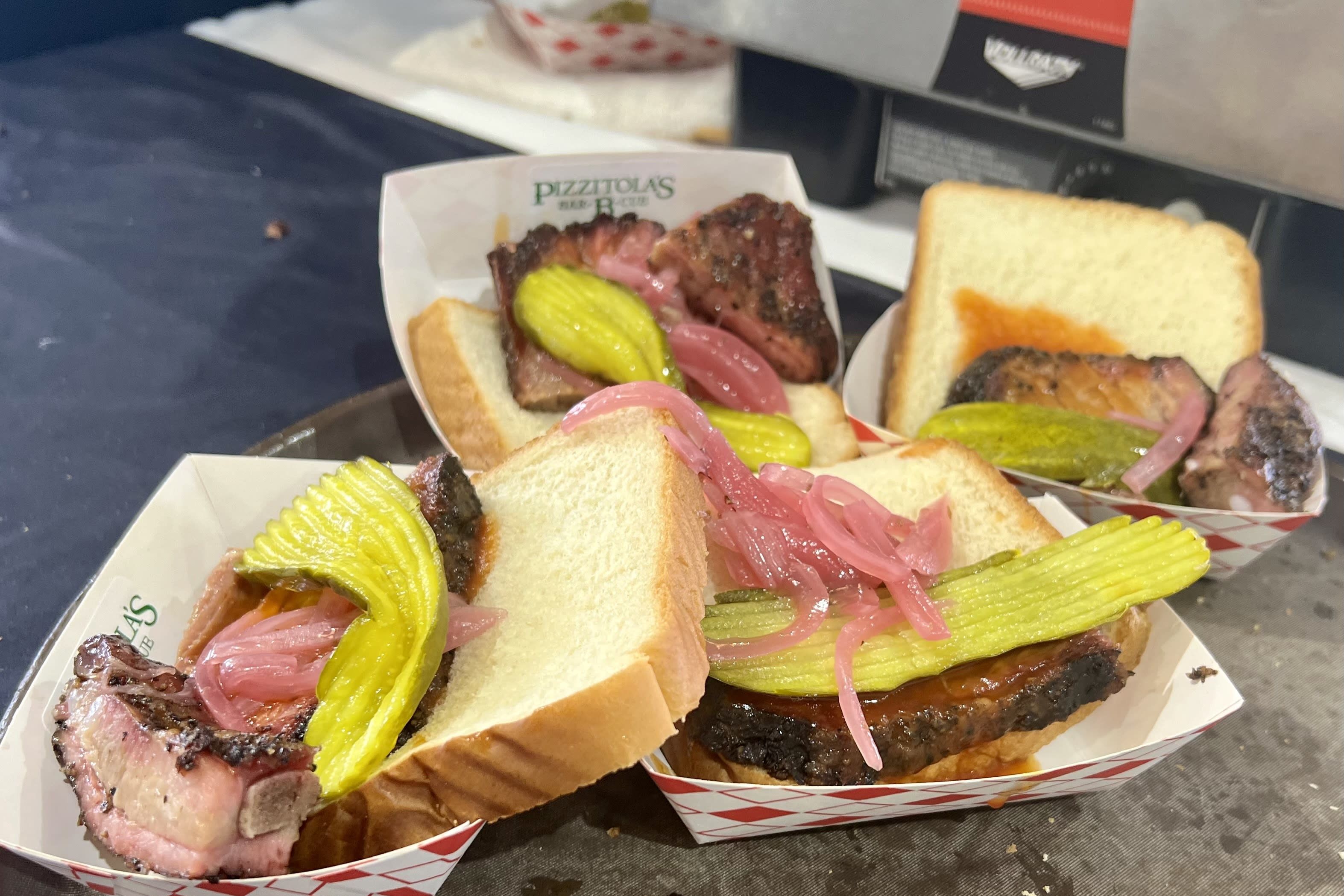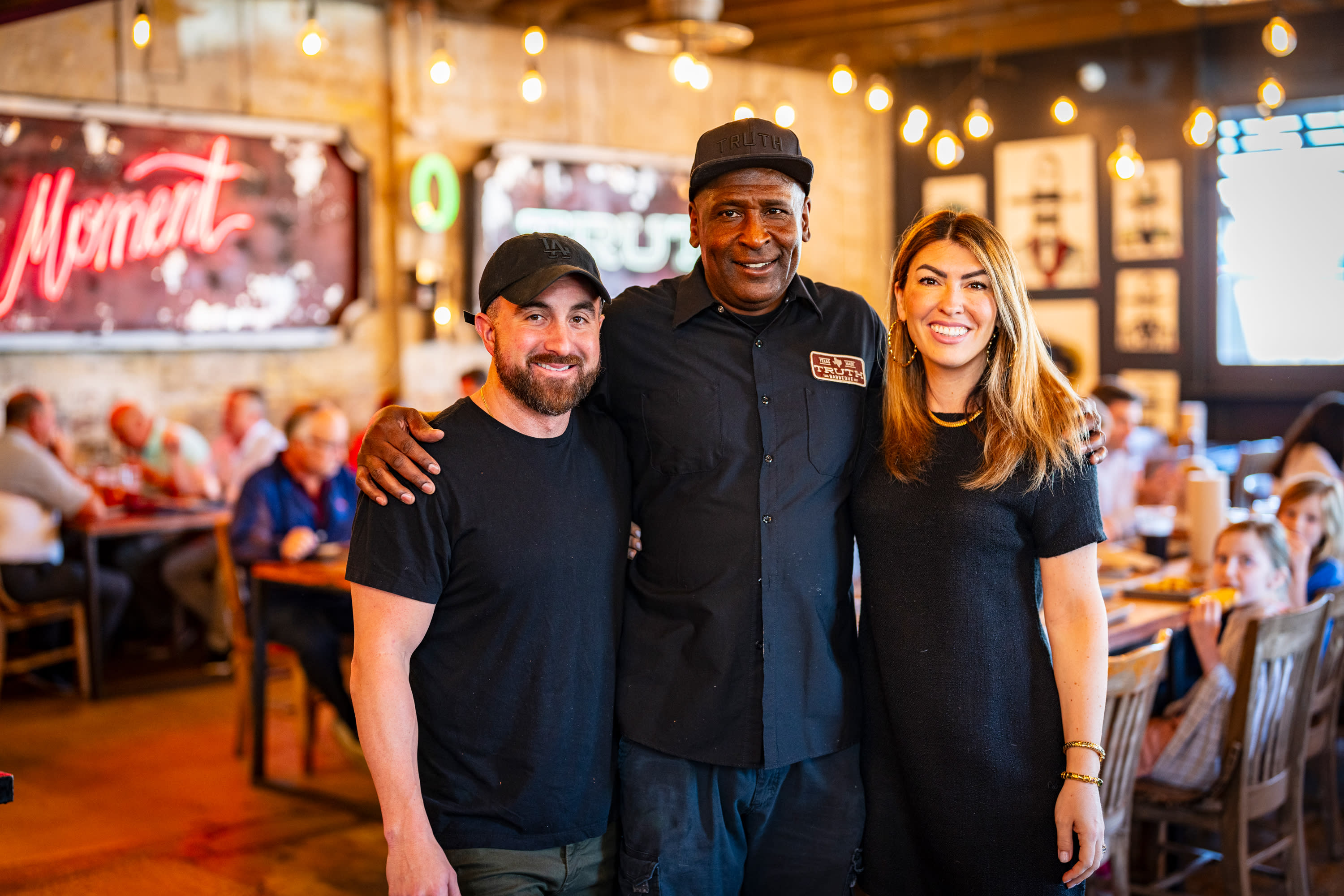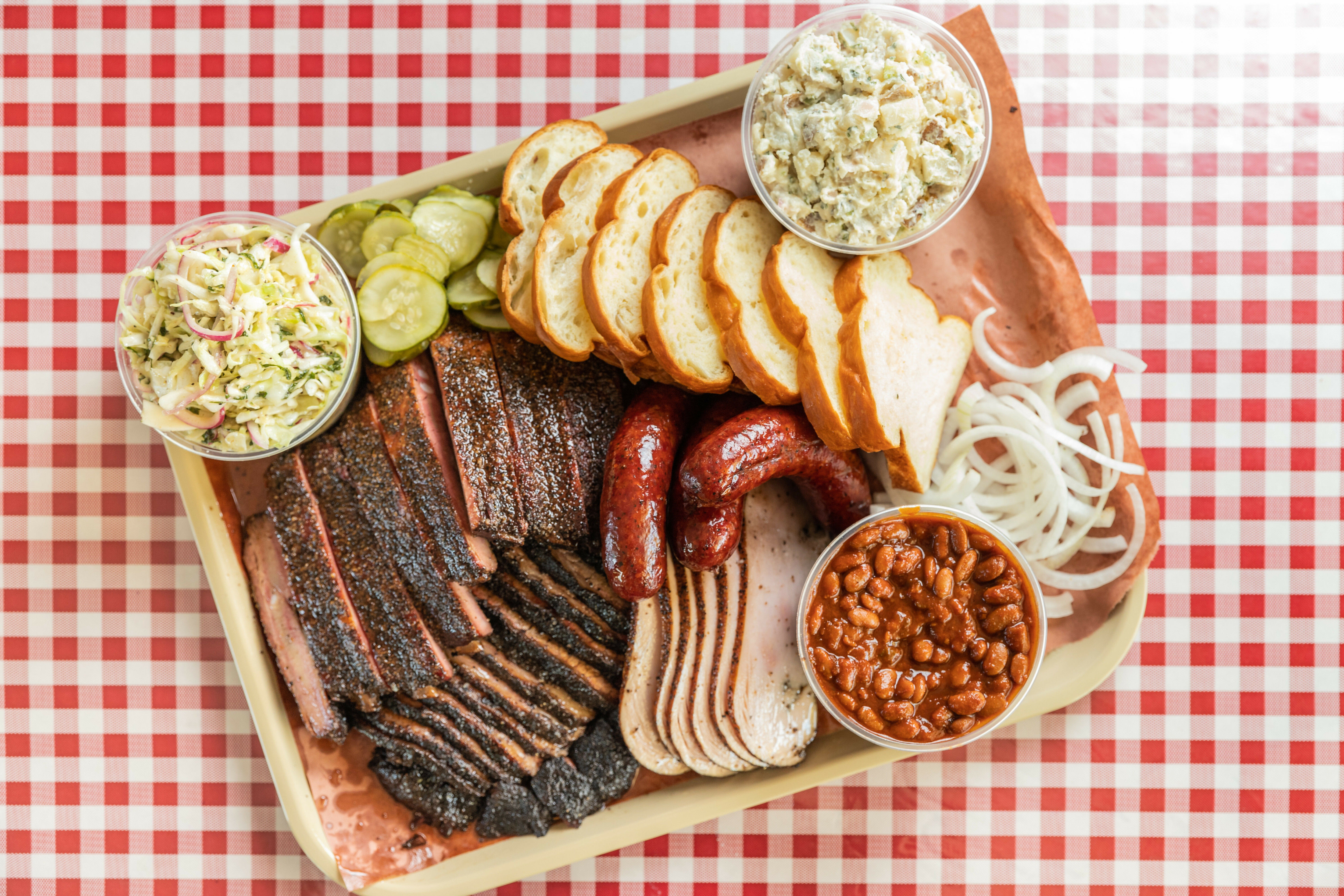Every Houstonian Is Invited to the South American Asado
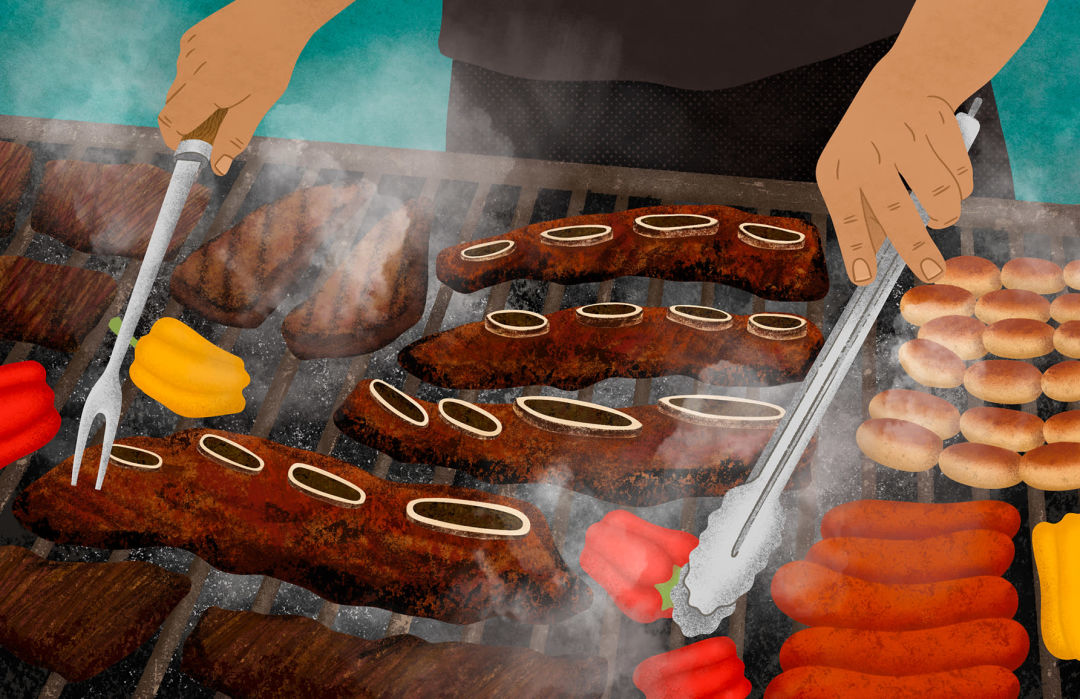
Texans and South Americans agree: there's never too much meat on the grill.
Image: Betty Turbo
In Texas, barbecue is practically a way of life—much like asado is in South America. That cherished tradition is deeply embedded in the continent, whose vast grasslands provide an abundance of high-quality beef, cultivating a love affair with grilling that rivals Texans’ own passion for ’cue. And like barbecue, asado is not just a meal option, but the centerpiece of friend and family gatherings, a cultural cornerstone that connects people over food. In short, South Americans and Texans share a common understanding: there’s no such thing as too much meat on the grill.
The famously carnivorous Argentina leads the way for beef consumption—not just in South America, but in the world—eating an average of 101 pounds per year per capita, according to trade group Bolsa de Comercio de Rosario, and 233 pounds of meat in general. It’s only natural that Argentina is renowned for its asado expertise. Sizzling cuts like flank and skirt steak, short ribs, and chorizo are meticulously seasoned and slow-cooked for several hours on the iconic parrilla, with either wood or charcoal. On the table at an Argentine asado, you’ll often find the country’s iconic chimichurri, an herby green sauce made with parsley, oregano, garlic, chiles, and red wine vinegar.
Patagonia Grill and Cafe, in Spring, is a prime spot to enjoy a great Argentine asado experience in the Houston area. This classic white-and-blue-tableclothed restaurant (a nod to the country’s flag) serves a variety of high-quality meats and seafood, but you’ll want to turn your attention to the “Parrilladas” corner of the menu. These are presented to your table with smoky flair, on a large platter, branded with “Patagonia Argentina,” that has sturdy wooden handles to accommodate the heavy load. If you’re dining with a group, pick the mixed grilled meat platter for four people, which includes chicken, short ribs, chorizo, entraña (skirt steak), morcilla (blood sausage), salchicha parrillera (pork sausage), and chicken gizzards (known as molleja). Patagonia also offers a prime meat platter with rib eye, filet mignon, New York steak, and skirt steak, as well as individual platters and a vegetarian option with seasonal Texas vegetables.
Unique versions of asado have emerged across South America. Uruguay’s is similar to its Argentine counterpart, featuring various cuts of beef, and also often served with chimichurri. At Saldivia’s South American Grill in Westchase, which bills itself as a “restaurante Uruguayo,” specialty menu items include boneless beef short rib (which the restaurant calls simply asado), skirt steak (entraña), and flank steak (vacio)—or simply order the parrillada de bifes, which combines all three.
Venezuela brings its own flair with parrilla Venezolana, featuring meats like beef, pork, and chicken, often served with guasacaca, an avocado-based sauce. Asado negro is also popular: eye of round roast is slow-cooked in a sweet and flavorful dark sauce often made with brown sugar, Worcestershire, and soy sauce. For a sampler taste of Venezuelan grilled meats, head to Latin Delight in Missouri City, where the Latin grill plate combines a pound of beef, chicken, pork, and smoked chorizo, served with pico de gallo, avocado, arepas, tostones, and yuca fries.
Brazil introduces its own twist with churrasco, a type of barbecue that most popularly features top sirloin cap, known as picanha, seasoned with coarse salt and rotated on skewers over an open flame. For a taste of traditional picanha, head to Emporio Inc. in Westchase, where it’s served with french fries, black beans, white rice, and a vinaigrette. The restaurant also offers a picanha for two cooked on a cast-iron pan with onions and garlic, and served with a vinaigrette and farofa, a yuca-based flour that’s often eaten with barbecue.
While a handful of cuts are widely popular across South America, some countries have more unusual specialties. Peru, for example, brings on the smoke to anticuchos, beef heart skewers marinaded in vinegar, garlic, cumin, and aji amarillo pepper. Peru Cafe Express, just north of West University, and Latin Bites in Tanglewood both serve anticuchos with potatoes and Peruvian corn, called choclo, which has denser kernels similar to hominy. For a fancier version, head to fine-dining spot Pacha Nikkei in Westchase, which adds touches of two Peruvian sauces to its dish: huacatay, a salsa verde, and huancaina, made with queso fresco and aji amarillo.
And while beef is king, in Ecuador a much smaller mammal takes center stage. The country is renowned for its cuy asado, a popular dish of roasted guinea pig. Ecuador-born chef David Guerrero used to offer the delicacy in his original location of Andes Cafe. Now in the Post Houston food hall, the restaurant hasn’t brought cuy back, but diners can enjoy an Ecuadoran hornado—marinated and roasted pork leg with a cheese-stuffed potato cake called llapingacho, sautéed hominy, and avocado.
The love for slow-cooked, flavorful meats is a universal language, and there are countless other varieties of asado out there, like the Colombian asado marinated in cumin and garlic, and Chilean asado, which is often seasoned with merkén, a smoky spice blend of cacho de cabra (a pepper native to Chile), plus coriander, cumin, and salt. No matter which particular tradition they sample, barbecue-obsessed Texans are sure to find a kindred spirit in the South American asado, which is alive and well in Houston.
